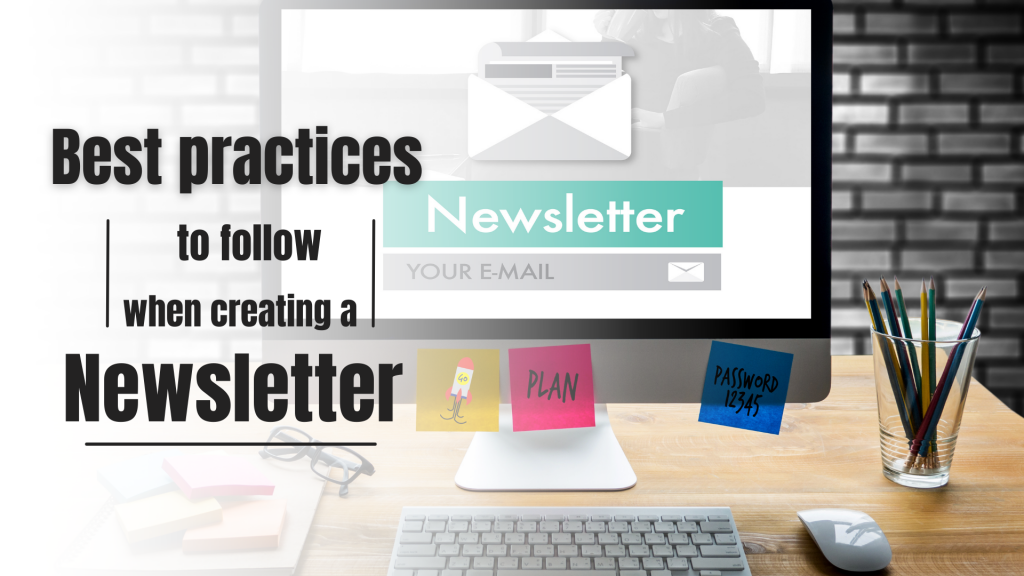
Tips & Tricks
The email newsletter is considered to be one of the best, most effective ways of reaching your customers. Unlike most other forms of advertising and marketing — broadcast advertising, billboards, online display ads — email marketing is one of the few methods where the customers have given you permission to contact them.
This is why creating a newsletter has become an integral part of any great digital marketing strategy.
How many of us actually watch all the commercials on TV? How many of us use an ad blocker on our web browser, or curse the websites that overload their pages with so many ads we can barely see what we actually came for?
We as consumers do everything, we can avoid them because they have gotten so pervasive. But with email newsletter marketing, the customer has given you permission to contact them. With email marketing, you can easily reach customers who have already said they liked you, have shown an interest in your product, and have agreed to receive future messages from you because they think you’re going to be interesting and valuable.
Email newsletter best practices
So, if you’re going to do this successfully, there are nine email newsletter best practices you should follow to make the most of your newsletter campaigns.
- Create interesting, engaging content.
- Take subject lines seriously.
- Be consistent in your voice.
- Use clear branding.
- Use images wisely.
- You need a call to action.
- Include contact information.
- Link to social media.
- Schedule your mailings.
Let’s get started.
- Create interesting, engaging content
The most important part of an email newsletter is what you actually put into it, but that all depends on what you’re trying to accomplish. Pick the content that suits your audience the best. In other words, pick the content that suits your audience the best. The purpose of the newsletter also dictates what you should be sending out.
02.Take subject lines seriously
Your subject lines need to be creative, but informative. Don’t treat your subject line like a punchline that requires someone to read the actual newsletter to get it.
If people don’t know what your newsletter is about by looking at the subject line, they’re less likely to read it.
Your newsletter headline is just like a newspaper headline: short, to the point, and tells the reader everything they need to know about what’s inside. But be careful of certain keywords favored by spammers. They’ll only get your email newsletter blocked by spambots.
03.Be consistent in your voice
What is your brand voice? Are you fun and delightful? Or are you serious and secure?
A toy store can have a newsletter that’s bright and full of whimsy, but a wealth advisor cannot. Conversely, a toy store shouldn’t talk about the ROI of childhood and how to maximize the benefits of fun, but the wealth advisor absolutely should.
04.Use clear branding
Omni-channel marketing is primarily a retail concept where customers receive the same experience in the store as they do on the website, in the mobile app, and even in the shipping packaging.
The omnichannel also extends to your email newsletter campaigns: the same colors, same fonts, same logos, same style of images, and even the same voice for your copywriting.
05. Use images wisely
Use images to break up your newsletter, especially if it’s a long one. Short words, short sentences, and short paragraphs, of course. Also, break things up with subheads, and use a couple images to visually support the text.
Photos this site will load quickly and easily, and won’t chew up a lot of your readers’ bandwidth or cellular data. Plus, they’ll load so quickly that your readers won’t get upset with you.
06.You need a call-to-action
Every newsletter needs a call-to-action (CTA), regardless of what you do.
If you want them to buy things, the CTA needs to be a “Buy Now” button. If you want them to stay in touch with you, give them something to respond to. And if you want them to visit your website, only send out snippets of articles and stick a “Read More” button at the end of each one so they’ll follow it.
07.Include contact information
Don’t assume that people will always click through to your website to find your contact information. Put your contact info in the footer of every email. If you want people to place an order, put your phone number and website in a few places throughout each newsletter.
08.Link to social media
Don’t forget to link everything to your social media accounts. People can click the links and be taken to your Twitter page, Facebook page, or LinkedIn profile from within your emails. But be sure you actually have accounts there first!
09.Schedule your mailings
If you want to figure out when to send your newsletters, I always recommend sending them out earlier in the week rather than later and earlier in the day rather than later.
However, this is because I’ve always sent out my newsletters at that time. I’m always pleased with the open rate (20% and higher), but I don’t have a giant mailing list to make that valid data.
Of course, as you’re figuring out how to design and execute your email strategy, it’s vital that you test and retest every decision you make. Whether it’s the font you use, the length of your article snippets, or even the times you send out the newsletter, you need to use A/B testing to refine your results and keep going until you have what seems to be the perfect email newsletter.
Author –Buddira Edirisooriya
